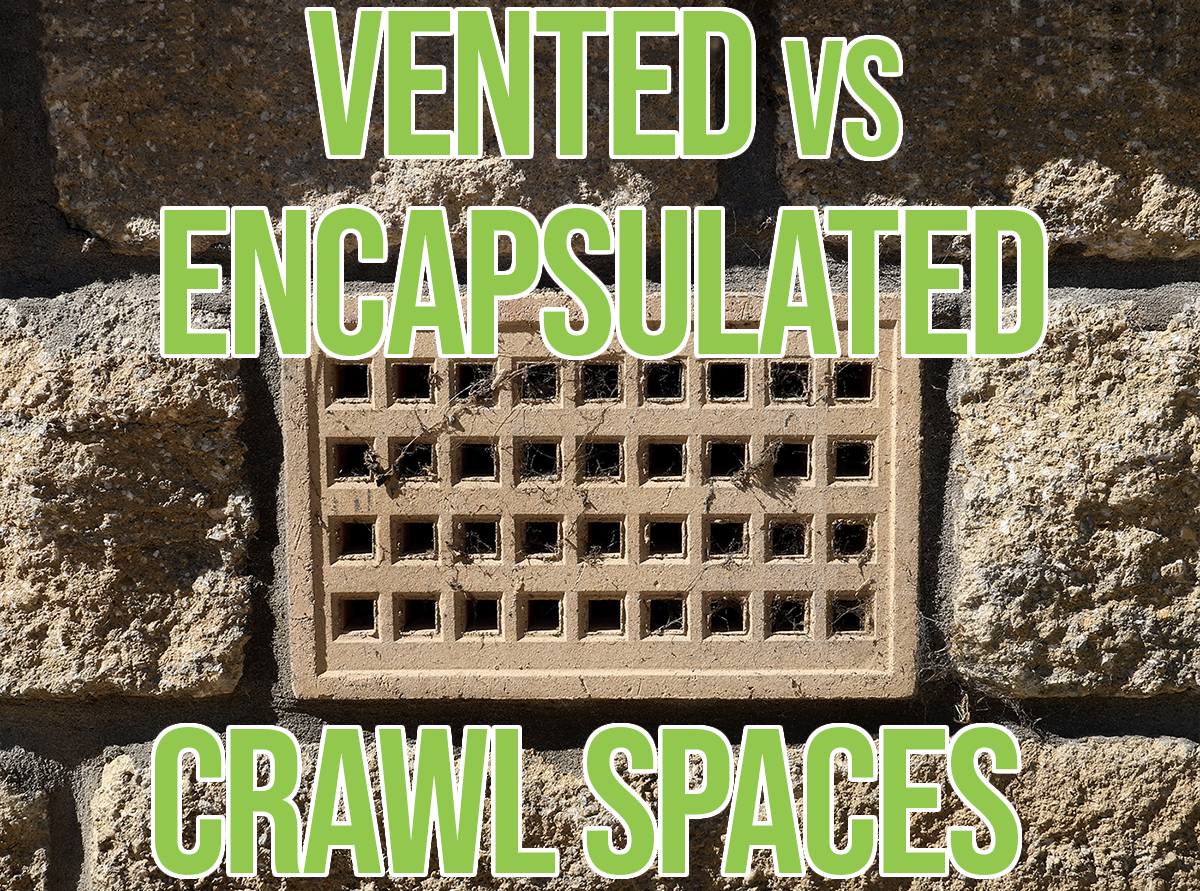The Difference Between Vented and Encapsulated Crawl Space Insulation

The crawl space under your home is exactly what it sounds like: a space under the floorboards that isn’t necessarily tall enough to walk around, such as a basement, but instead an unfinished space that’s typically only one to three feet high. This area will have wiring, pipes, insulation, and ventilation systems to help keep your home safe and comfortable.
When it comes to properly insulating this area, it’s important to know what kind of crawl space you have under your home. The best way to tell whether your home has a vented or encapsulated crawl space is to consult an expert.
While you'll need the guidance of a local professional, it's important to know more about the structure of your home to make cost-effective and energy-efficient decisions on upgrades and renovations.
What Is A Vented Crawl Space?
Crawl space vents were considered the best option in old building science to help relieve humidity and moisture in a building. A number of vented openings are installed throughout the space to allow for circulation and airflow. The grated covering over the openings helped to prevent “hotboxing” under a house with trapped, humid, and stagnant air.
Unfortunately, it has since been discovered that this kind of construction comes with a number of disadvantages. Namely, the fact that it may allow small pests to infest the area and it doesn’t prevent moisture from entering the space. Studies from the U.S. Department of Energy show that "vented crawl spaces located in mixed or hot-humid climates tend to increase the moisture level within the space instead of keeping it drier".
Humidity can impact the health of your household and the integrity of your structure, making vented crawl spaces a crucial area to properly insulate for more protection in your home. Proper sealing, water-resistant materials, and vapor barriers are a few ways your local insulation experts can take care of the moisture problems that can occur in these spaces.
What Is An Encapsulated Crawl Space?
Crawl spaces in newer construction (homes built after the 1980s) look a lot different thanks to the advancement in industry research and technology. An encapsulated design was developed to protect the space under a building from moisture with a dehumidifier and eliminate entry points for condensation. These spaces have lower levels of humidity and reduced water vapor in the air.
An encapsulated space helps to reduce the risk of hazards like wood decay, building envelope damage, and bacterial growth. However, it does prevent the flow of natural, fresh air from entering the home like a vented crawl space. Encapsulating a space can also be an expensive process for older buildings that may have moisture damage due to missed evaluations.
While the benefits of an encapsulated or vented crawl space should be taken into consideration, both types of subfloor environments need to be properly supported by insulation and air sealing.
Properly Insulating Your Greenville Area Crawl Space
Keeping this area properly maintained is crucial in improving the comfort, safety, and savings of your home. Up to 10% of heat loss occurs through the floorboards of your home, escaping through a poorly insulated crawl space. Adding batt insulation or installing spray foam to this space can not only prevent higher levels of humidity and moisture in your home, but it can also reduce the effects of heat transfer.
Well-maintained insulation and air sealing help to decrease the rate at which heat flows through a structure. These materials regulate the temperature in a building and provide support to your climate control systems. Regular evaluations and upgrades can help you improve the indoor air quality and comfort levels in your home without the presence of expensive ventilation and thermal appliances.
Understanding Your Home’s Needs
Each building in your area, from within the region to right down the street, will have different and unique needs from the others nearby. When it comes to choosing the right insulation for your home or business, a local Greenville area professional needs to take into consideration much more than just building codes, energy standards, and regional guidelines. The unique needs of your space include factors such as regular household habits, the potential for extreme weather, and even the type of appliances you have installed.
Why is it so important to have a team that looks into the details of your home's energy usage? There is no one-size-fits-all solution when it comes to installing adequate insulation. Each type of material has its own advantages for different circumstances. You even need a variety of insulation materials depending on where you're insulating; fiberglass batts may be useful in between wall beams, but blown-in material is more effective for lining the floors of your attic. The unique needs of your home are the perfect guidelines to help you reduce energy waste and improve your comfort.
Finding The Best Material For Your Home’s Needs With Greenville Area Experts
Building experts estimate that about 50% of the air on the first floor of a house comes from the crawl space. While this may feel like an encouragement to use vents to rotate fresh air into your space, it also means mold, odors, and pests under the floorboards directly influence the air you breathe in your home. Insulation, air sealing, and regular inspections help to prevent and reduce the health risks and discomfort that are associated with unfinished crawl spaces.
To learn more about the needs of your home, schedule a free evaluation with your local professionals at Koala Insulation of Greenville.
Find Your Location


Get a quote


